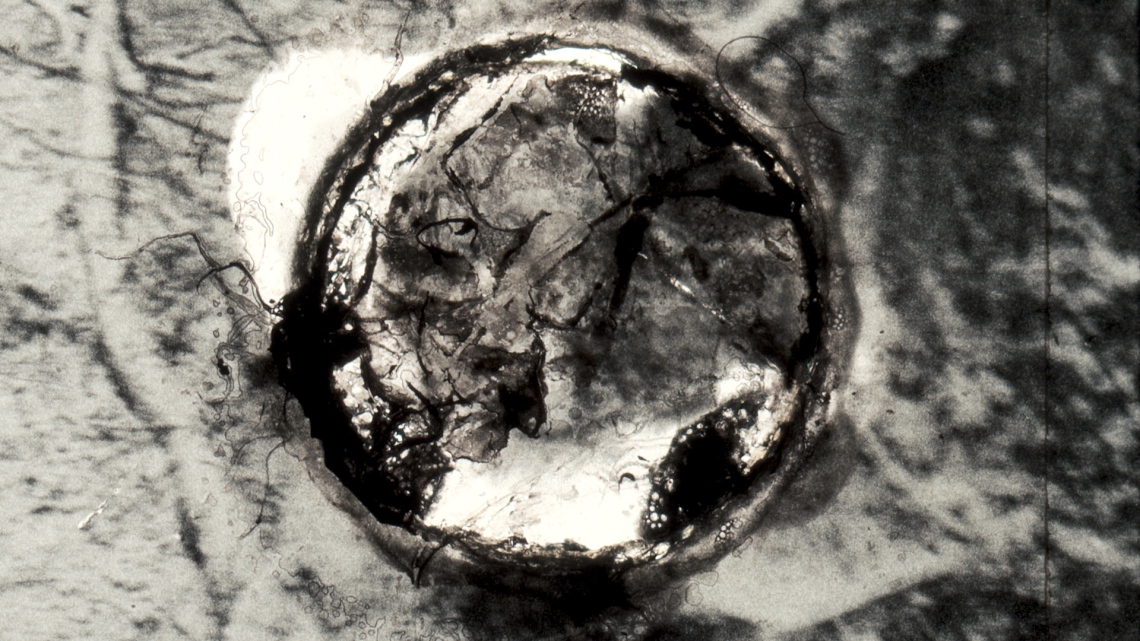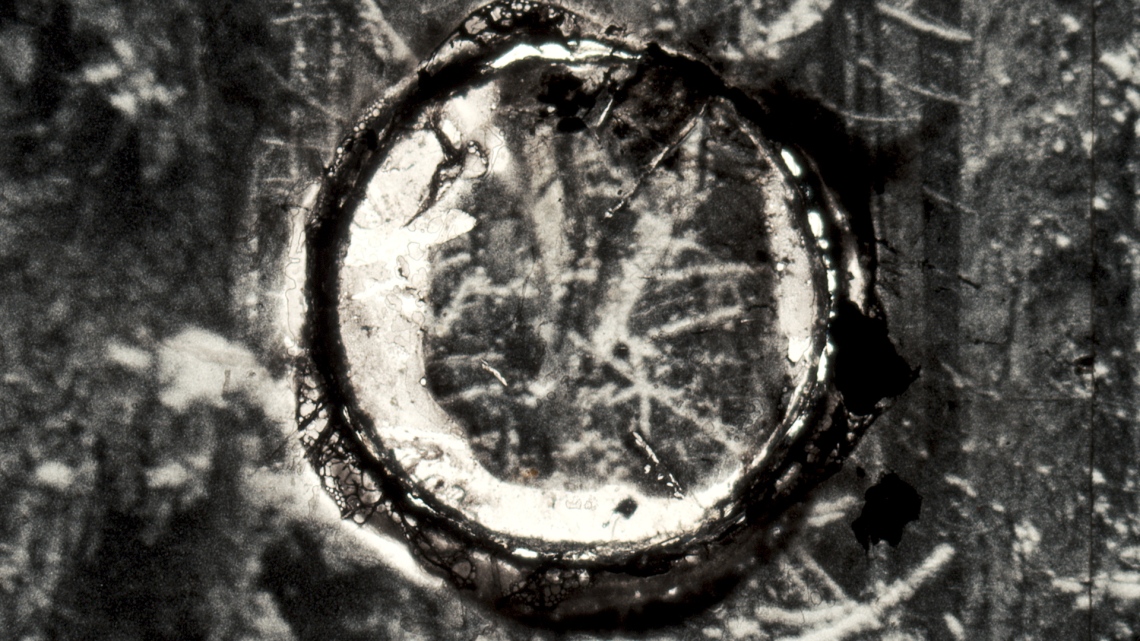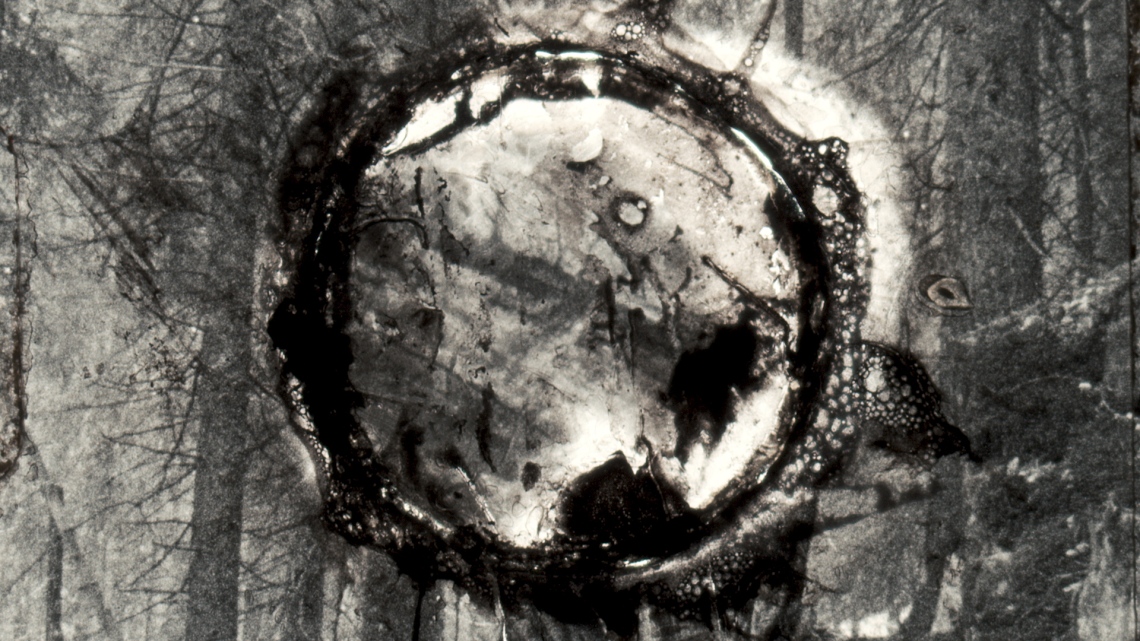
Autojektor retraces the steps of making her Super 8 film ‘Basilisk’ in the Black Forest.
I am an artist/filmmaker based in London. Working mainly in recovering and destroying found 8mm film; I try to make social commentary while playing around with ideas of time, memory and dead formats. I’ve been getting into demonology and alchemy quite a lot over the last several years. Basilisk is a film I’d been working on throughout 2019 which is a culmination of all of this.
In alchemy, there is a method of describing chemical processes through the forms of mythical creatures. The lion can symbolise the sun or gold or dominance. But the way in which the lion is depicted describes the process. There is a common image of a green lion devouring the sun. Chemically this can be a metaphor for purifying matter using a green liquid sulphate called Vitriol. This acid eats through almost anything but gold – so this is what is left over. These images also have personal or emotional translations. The green lion has been translated to overcoming corrupting thoughts.
There is something in the breaking down of symbols in folklore that really speaks to me. Monsters and mythological creatures – how they are created and why some of these bizarre forms have stayed in the zeitgeist while others have dissipated. I believe that monsters are base cultural concepts, fears or whatever but described through an anthropomorphic language. And I think breaking down these concepts and rebuilding them in different languages can lead to a deeper understanding of who we are. And at the very least translating them into a filmic language could create some cool visuals.
I’d been reading a lot about the basilisk. It is a creature that had been popping up quite a lot in my research. It takes a variety of forms depending on its culture, but is most commonly depicted as part rooster and part serpent that can kill with a look. In different cultures it’s translated as the cockatrice or as Medusa but it’s the constants that are interesting. The corrupt joining of two unbreedable creatures, its decorative crown, its deadly stare. So chemically it’s this dangerous and volatile reaction resulting in putrification and necrosis. But artistically there are elements of spectacle and a horrific beauty to it – it is something that needs to be seen but shouldn’t.
To try and translate this into a film medium involves the breaking down of symbols before reforming them. It’s not the idea to simply depict a physical basilisk on screen. But to take it apart, understand it on an honest, emotional level and put that feeling on film. Understanding this, my idea was to produce a film that would physically harm its viewer.

In April 2019, my partner and I took a 2-week trip to the Black Forest in Germany. We stayed in a cabin in Zell Im Wiesental, a small town by the Swiss border. It’s a quiet place sitting in the forest’s valley floors – surrounded by mountains and trees. It’s a really calm and comforting industrial town but it has this looming forest constantly watching over it. I liked it a lot.
When starting this film, I had no plan on what I was going to actually do. I’d brought a Super 8 camera and 4 film cartridges so I could play around and experiment. But I hadn’t touched a camera in years so was a bit hesitant. Because of this I wanted to, at first, come up with some base idea and this writing stage turned into a bit of a meditative process. I started hiking, taking the public trails to get a feel for the area. As someone that had only been out of the country once before as a kid, it was easy to lose myself.
The story of Hansel and Gretel was inspired by the Black Forest. And walking through it you get why. It is immense and it is endless. Trees upon trees upon trees. The trails break it up and there are these little hikers’ huts dotted throughout; the locals like to leave cigarette packets in them for passers-by. But off trail you can really feel it closing in on you. Taking this in – I thought that for the film – to translate the idea of the basilisk, there would have to be an extra step. To create a creature that could encapsulated everything that the basilisk did but one that lived within these woods. And with Hansel and Gretel, it’s obviously the witch.
The ideas for this witch came through creative exercises where I would purposely get myself lost – I’d let my phone run down and I’d walk into the thickest woods and heaviest fog until I started to panic. And then I would sit and write.
The basilisk is the corrupted joining of unbreedable creatures, with a decorative crown and a deadly stare. The witch became a hybrid of human and forest. An emaciated frame with tight skin oozing and scabbed like bark. A face of wild petrified wood, gnarled to a point – where sits a single unblinking eye. She is Basilisk – she bathes by the rivers.
With the creature designed it was now a matter of translating it to film. The decision to not outwardly depict the witch came quite quickly when the idea to do so seemed dumb and pointless. So as an artist that focuses solely on process, it made sense to use the filmmaking itself as a channel for this creature. The forest was to be the subject and the witch would work through the camera to bend the woods into shape.

Structurally, the idea of an endless loop felt best. I wanted to shoot the forest in a way to give away none of its geography. Capturing it in a series of still frames, where I could show two parts of the forest 10 miles apart but only separated by 1/25th of a second. The imagery of manipulating time and space to where it’s impossible even trying to reason with it would make the base of the film. It’s an attempt to visualise the panic state.
So, it’s about a week in and by this point I was taking daily 8/9 hour hikes – shooting single frames as I went. I was beginning to become more familiar with the forest. It is a beautiful place and I had a few more spiritual experiences. There is this serene calmness that just sits there. But when the sun starts going down and the fog comes in, and when you are totally alone, there is this sense that everything is watching you.
It’s this voyeuristic feeling in these panic states that I wanted to capture next. To be totally lost but always under this unflinching stare. Alan Moore has a story about seeing Beelzebub as a giant hog-flesh wall of hate-filled eyes. I thought it would be cool to make each single frame like one of the bricks in this wall.
2 weeks were up. I hadn’t even filled a quarter of the cartridge. I got it developed and I’d got about 30 seconds of footage back. It’s Kodak Tri-X reversal, it’s black and white with a nice contrast to it. That’s incidental but it looked nice with what I ended up filming.
So the process began. To create the eye, I wanted to break it down into 3 parts – the iris, the lens and the white. The iris was made with a leather puncher, cutting out a 2.5mm circle and painting the inner edge of the space with bleach and ink. The lens was the piece that was removed, also with the edge painted and stuck into place, back into the frame (the white). On some of the durational shots I wanted the lens to animate and spin in place, making what would be a usual focal point impossible to rely on. Then the lens was stuck down with tape and this process was repeated about 900 more times.
There is also an important digital component; there wasn’t any cutting but at 8mm a frame, always having the eye in the exact centre is just something I didn’t have the equipment or patience for. So I altered the aspect ratio to 16:9 – this helps sit the piece in more of an eye shape and helped with digital stabilisation.
And this is where I am at now. A 30 second loop and overall I guess I feel positive about the piece. But a few test screenings in and I’m not 100%. The base idea was to deconstruct the basilisk – translate its ideas into a filmic language and rebuild it into an abstract film loop. Which it is. But for its intended effect it cannot work in a typical viewing experience. There isn’t any panic when sitting comfortably in a screening room with a bar and decent toilets. There isn’t any claustrophobia when you can turn your head away from the screen and leave. The cinematic environment itself will have to bend. That’s the next cycle.
Click for more articles in this issue:

